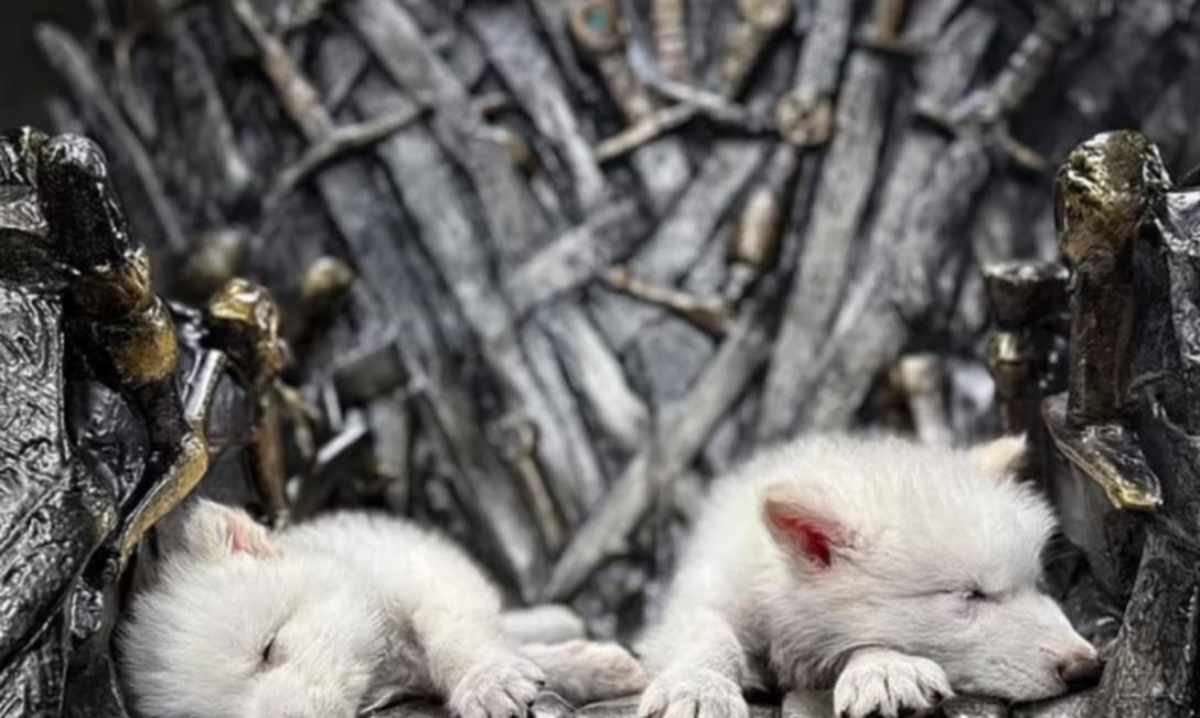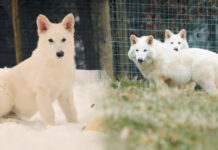Romulus and Remus are chasing, tussling, nipping, and nuzzling like puppies. However, any sane person can already guess that these snow-white 6-month-olds are nothing like normal puppies. Everything about them is very different. And that is their reality. The pups are wolves; not only that, they’re Dire wolves. Don’t mistake them for domestic canines, they are wild lupines.
What Is a Dire Wolf?
The dire wolf (Canis dirus) was one of the most iconic predators of the Ice Age. Larger and more muscular than modern gray wolves. Dire wolves were apex predators that once thrived across North America. Weighing up to 150 pounds, they hunted massive prey such as bison, horses, and even mammoths.
Unlike the wolves we know today, Dire wolves had stronger jaws, more robust skulls, and a stockier build. But despite their strength, they vanished about 10,000 years ago, likely due to a combination of climate change and competition with emerging predators, including early humans.

The Revival of the Dire Wolves
Thanks to advances in genetic engineering and ancient DNA recovery, a team of international scientists has managed to reconstruct the dire wolf genome using well-preserved fossilized remains. By combining this ancient DNA with modern gene-editing tools like CRISPR, researchers created a hybrid embryo that shares a near-identical genetic makeup with the original Dire Wolves.
The embryo was implanted into a surrogate canine, and after a successful gestation period, a live dire wolf pup was born—the first in over ten millennia. Early observations suggest the revived animal exhibits many traits seen in fossil records: larger bone structure, thick fur, and a powerful jaw.
Ethical Concerns and Scientific Debate
While this revival marks a scientific milestone, it also sparks heated debate. Should we bring back extinct animals? Some argue that de-extinction could help restore lost ecosystems, while others worry about the consequences of reintroducing prehistoric predators into modern environments.
There are also questions about animal welfare, ecological impacts, and whether the revived dire wolf is truly “authentic” or simply a close genetic recreation.
Read More: Rare Sighting of Four Snow Leopards in Northern Pakistan Sparks Excitement
More Power, More Responsibility
This revival of the Dire Wolves after 10,000 years isn’t just a leap for science; it’s a glimpse into the future of life on Earth. As genetic technology continues to evolve, we may soon have the power to resurrect long-lost creatures and perhaps even reshape ecosystems for the better.
But with great power comes great responsibility. The question remains: just because we can bring back extinct species, does that mean we should?










































